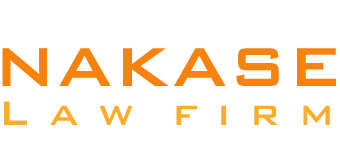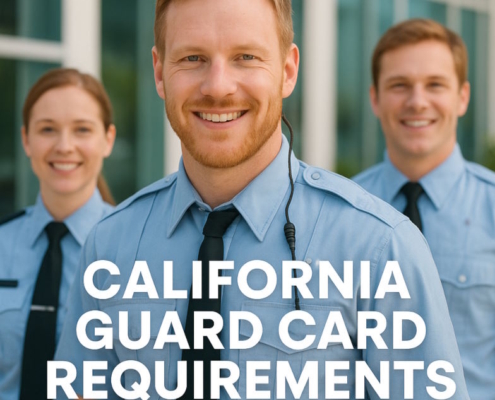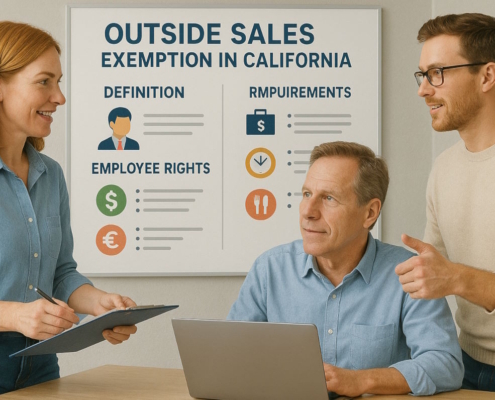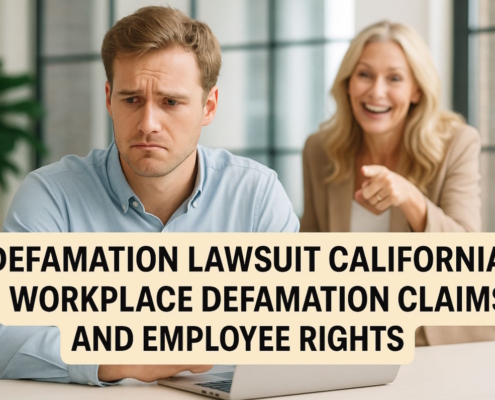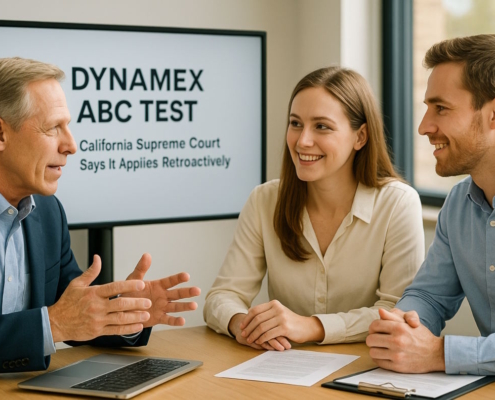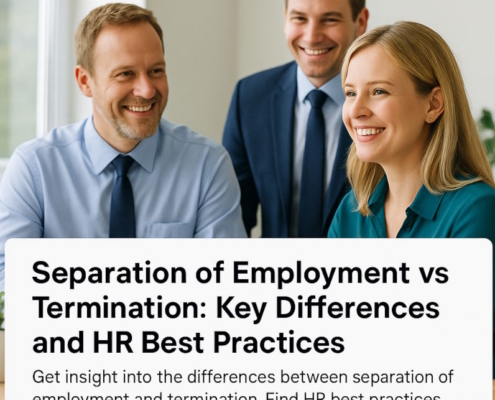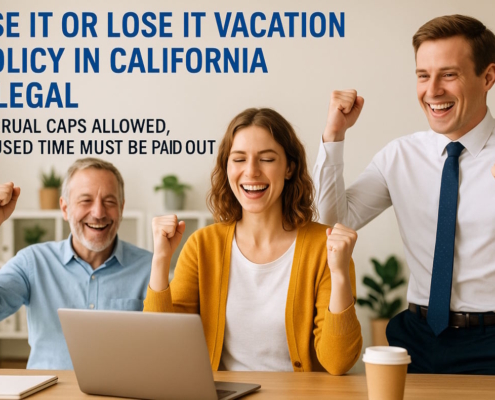Introduction
California is one of the states where various employees are permitted to have meals and rest periods while working. Your shift length will determine how many breaks you receive. All of the information you require regarding California’s meal & break legislation is covered below.
Meaning of a Meal & Rest Break
“Break” is a term used to refer to the period of a workday during which a worker is allowed to rest briefly during work. The number of breaks is different according to the company’s policies. Being an employee, you may have a meal break to eat or drink whenever you find it convenient during the working day. On the other hand, a rest break gives you a chance to get a momentary pause from work to relax.
The purpose of rest breaks is to provide workers with less than 10 minutes to use the bathroom or take a break from work. Many businesses expect their workers to take advantage of the amenities at work when they are taking a break. Employers who deny their employees the necessary access to these facilities run the danger of facing legal action. Employers who deny their employees this right will also raise concerns about workplace sanitation and worker health.
California’s Laws Regarding Meal and Break
It is legally required to provide meals and relaxation periods in California. The regulations regarding meal & rest breaks impose harsh CA meal penalty on companies that do not permit their staff to conveniently cycle around their meal and rest breaks. A manager at a store who had been made to work nine hours a day without a break won a case before the California Supreme Court in 2007. For each day that the shop manager labored without meals or breaks, the court mandated that the company give an additional hour’s compensation.
Under several circumstances, employers are required by California law’s Labor Code 512 to provide meal breaks for their non-exempt workers. The first requirement is that they give up any authority they may have over the actions of their workers. They must free workers of all responsibilities during meal breaks, according to the second requirement. Also, employers should not interfere with or discourage their non-exempt employees from having a complete 30-minute break.
1. Non-Exempt Employees: Who Are They?
Non-exempt employees are those who are entitled to meals and rest periods under California law. As a result, exempt personnel are those who are not eligible for the breaks. Those who perform executive, administrative, or professional duties for businesses or organizations are typically considered exempt employees. Workers in professions with specific meal and rest break regulations are among them.
According to the California Supreme Court, employers must make sure that non-exempt workers are not working during lunch breaks and refrain from supervising them. Your company will not pay you for the hours you work if you voluntarily decide to work through your legally mandated food break. Even if the company was aware that you had been working through the break, you would not be able to pursue payment for your job.
2. Is it appropriate for you to depart from work early after working through the meal break?
You will not be entitled to leave work early if you work through a meal break. Industrial Welfare Commission Wage Orders only permit on-duty breaks for meals if your company satisfies a number of requirements. Your job must keep you from being released from all responsibilities during your meal break. A written agreement outlining the specifics of the on-the-job compensated meal break must also be made available for you to sign with your employer.
Right to Rest Periods
While working your scheduled shifts, one of your privileges as a non-exempt worker is to take a rest interval. You can take ten minutes or more to rest, which will allow you to take a break from your task. It is your right to request payment for these periods of rest. Your company should also provide you and your employees with enough rest areas.
1. How Often Should You Take a Rest Break?
How many rest intervals you can take depends in part on how long your work shift is. You are entitled to a 10-minute break for every four-hour period that you work. However, you might not be given the ten-minute break if the workday is shorter than three & a half hours. If you work a large portion of the four-hour period, you will have a ten-minute rest. You can use the phrase “a substantial fraction” in your situation if you work longer than two hours.
John Miles puts in a six-and-a-half-hour shift at a nearby eatery. He has the right to two 10-minute break periods because he works a significant portion of his four-hour shift. His four-hour shift includes the first rest time, and the extra two & a half hours of work are covered by the second. In this instance, the significant portion of his job shift is the two & a half hours.
2. Additional Information about Rest Periods
A three-and-a-half-hour job shift does not grant you the right to a rest break as a non-exempt worker. You are entitled to a ten-minute break if you have been at work for three & a half hours or longer. A six-hour shift will result in two rest intervals, lasting twenty minutes. Your employer ought to give you an additional 10-minute break each time you go over the four-hour mark.
When Is the Right Time for Rest Periods?
Rest periods should be scheduled in the midst of each work session in accordance with California’s rest break regulations. You should be permitted to take breaks during your shifts by your company. Your employer may, however, permit you to take advantage of the breaks during other periods of your shifts if some factors make it impractical to adhere to these rules.
1. Is It Possible to Willfully Miss a Rest Period?
If you choose not to take a rest break, your company won’t be penalized. In accordance with the law, the employer must approve and permit the break if you choose to take one. Employers who breach California’s rest break requirements face a variety of sanctions. If an employer does not give non-exempt workers a suitable rest break, they will be held accountable for fines.
2. On-Site and On-Call Rest Periods
Recently, the California Supreme Court decided that businesses must give up control over how their workers use their downtime. The judges who ruled in the court verdict concurred that workers must be released from their responsibilities during their breaks. Without interference from your employer, you are free to use your break time anyway you see fit.
Meal Breaks in California: A Right
California non-exempt workers should be required to take meal breaks during their workdays. A 30-minute food break might be given to employees so they can take care of personal matters. Unless you are carrying out your work responsibilities throughout the break, taking a break will not grant you any remuneration.
It is actually not necessary to eat during your meal breaks. It is up to your employer/manager to decide whether to provide meals for you and your coworkers during these breaks. You must be allowed to either stay on the property, perform your errands, or depart during the allotted thirty minutes. It is entirely up to you how you choose to spend a food break.
How Many Meal Breaks Should I Take?
The amount of time each non-exempt employee devotes to working a shift determines how many meal breaks they are permitted to take. A meal break will not be granted for shifts shorter than five hours. If you work for over five hours, you will be able to take a 30-minute break. Two 30-minute meal breaks will be included in a work shift longer than 10 hours.
How Often to Take Breaks for Meals
You must start your first 30-minute food break before the conclusion of your 5th hour of work. Your subsequent meal break must begin prior to the conclusion of the 10th hour of work if you are working longer than ten hours. It is the duty of your employer to release you from all responsibilities and to give up authority over your actions. Additionally, the employer must give you a fair opportunity to enjoy the meal break uninterrupted.
It is illegal for your boss to prevent you from having a 30-minute break. If you work for six hours or less, you have the option to mutually consent (written or unwritten) with your supervisor to have the food break waived. If your workday lasts longer than six hours, you won’t be able to take the 30-minute break. In a shift of shorter than twelve hours, you can only skip the second meal break if you did not skip the first one.
Meal Breaks While on Duty and While on Call
In certain circumstances, such as during on-duty break times, employers are not permitted to relieve their workers of their work-related responsibilities. Your employer is required to pay you because you will be performing some of your job tasks during these times. However, if your employer denies you the opportunity to take a meal break, there will be no consequences.
When the hectic schedule of your job prevents you from finding respite from all your job-related duties, you may need to take an on-duty meal break. On-duty breaks for food can also be negotiated in writing with your employer. You can get paid for the hours you labored during a food break, thanks to the agreement. Make sure that the authorization form contains a clause that lets you withdraw it whenever you want.
If one of the business’s rules requires you to utilize meal breaks at work, your employer must provide you with adequate dining facilities. Your company should have amenities for getting hot meals or drinks if your break falls during an office shift that starts at nine in the evening and ends at five in the morning. The workplace should also include appropriate covered areas for warming up or eating and drinking.
What Are the Repercussions for Failing a Rest Period?
Employers are required by California’s meal and rest break legislation to compensate their staff for any missed meal or rest periods with an additional hour of compensation at their usual hourly rate. If your employer does not provide you with rest breaks, you are entitled to an extra hour of pay each workday. Every workday, a missed food break will result in an additional hour.
For instance:
Susan performs a 7-hour shift. Her place of work does not give her any meals or rest time. She can only request remuneration for two additional hours, even though she lost one meal and 2 rest breaks throughout the seven-hour shift.
Decisions Employers Must Make About Rest and Meal Breaks
As mandated by law, employers of non-exempt workers must provide rest and eating breaks. They can also consent to forgoing the break with the employee. Paying employees a CA meal penalty of one hour for each missed break is an alternative. Your company will not cover the cost of the missed break if you decide not to utilize the meal or rest period that is provided to you.
Do Nursing Mothers Have a Right to Lactation Breaks?
Employers must provide lactation breaks to female employees who wish to provide breast milk to their children. Their additional rest or food breaks might fall during these periods. Lactation breaks that take place outside of the usual break times are not compensable to new moms. They must get a quiet/secluded space on the company premises where they can express their milk without any disturbance.
Employers who do not provide lactation breaks to nursing moms risk serious fines/repercussions. For every infraction, they are required by law to pay a civil penalty of one hundred dollars. They ought to provide the breaks without interfering with their regular business operations.
Meal & Break Laws in California for Exempt Workers
Generally speaking, exempt workers are not entitled to lunch breaks or rest periods. Professionals, administrators, and executives are common categories of exempt workers. There are particular guidelines or exclusions for different industries with regard to these breaks, as detailed below:
1. Work-Related Exemptions
Your employer may allow you to take on-duty breaks for food if your job directly entails caring for youngsters. The meal & rest break legislation has distinct exclusions for different industries. These include the wholesale baking business, government organizations, the healthcare sector, and the film industry. Others include building, security services, and professional driving. If you work for a publicly-held gas corporation, electrical corporation, or electric utility firm, you may be eligible for several exemptions.
Healthcare workers, in contrast to other workers, may be required to stay under their employer’s supervision during their meal breaks without compensation under an IWC Order. The time could be used to handle several types of situations. Minor exemptions to the general norm that workers must be compensated when their employers make them work during breaks for meals are provided under the IWC Order.
2. White-Collar Industry Exemptions
If you make at least double the minimum salary for a full-time job contract in California, you can be considered an exempt employee. Professional or administrative tasks must be part of your principal work responsibilities. You must exercise independent discretion and judgment in the course of your daily work as an exempt worker.
Recovering Funds for Rest Periods and Missed Meals
If your employer denies you a food break or rest period, you have three choices. These choices include settling the conflict with your employer, bringing a lawsuit, and submitting a pay claim for the CA meal penalty. Lawsuits are typically costly and time-consuming. Additionally, you could find it difficult to settle the conflict with the company informally.
Filing a pay claim with the Department of Labor Standards Enforcement is the best choice among the three. Following your claim submission, the DLSE is going to issue warnings to your employer mandating payment. Getting a lawyer’s advice on the problem is good, but how you resolve a missed break argument will depend on your circumstances. After the purported meal break breach, you have just three years to sue your employer or make a claim for the CA meal penalty.
1. How the DLSE Handles Your Claim
Your claim will be submitted and allocated to a Deputy Labor Commissioner, who will assess the details and circumstances of the claim to decide on the appropriate course of action. The CA meal penalty claim may be dismissed or sent for review or conference as part of the course of action. You and the company will get a letter with the conference’s time, date, and location if the commissioner suggests that both parties set up a conference. Without the need for a hearing, conferences can be used to assess the merits of a lost break claim and offer potential solutions.
If the meeting doesn’t help resolve the matter, it can be sent to a hearing. If there is insufficient proof, the commissioner might have gotten it rejected. During the hearing, which is typically videotaped, all parties and witnesses will provide sworn testimony. The California Labor Commissioner will issue an ODA to the parties following the hearing.
Every party is entitled to file a civil action to challenge the ODA. All parties will be given the opportunity to submit witnesses and proof, and a California court with sufficient jurisdiction will determine the specific case for trial. The testimony and supporting documentation provided by the parties during the Labor Commissioner’s session will not influence the court’s ruling. In the event that their employer files an appeal, DLSE typically defends workers who cannot afford to hire an attorney for the hearing.
2. The deadline for submitting a claim for an infringement of the meal and rest periods
After the Murphy v. Cole decision, the Supreme Court of California ruled that the CA meal penalty for violations of lunch/rest periods should be one extra hour of compensation. The pay is subject to a three-year statute of limitations according to Labor Section 226.7. Employees in this situation have a maximum of three years to bring a claim for a purported breach of the meal period.
Do You Have a Good Argument Against The Employer?
Several criteria are taken into account by workers’ compensation lawyers. They check whether non-exempt workers have a strong case against the company. Spending some time talking to a lawyer about your case will definitely help you determine whether it has the potential to succeed. These are the elements that attorneys take into account:
- For a shift lasting eight hours, the employer refused to give you a thirty-minute unpaid dinner break.
- You didn’t get two 10-minute paid breaks during an eight-hour shift.
- Your boss prevented or dissuaded you from taking a break or a meal.
- During your meals and relaxation periods, you were on alert or on call.
- Your food and rest time were interrupted by a number of work-related issues.
- Because you worked more than 10 hours in a workday, you were not granted two 30-minute meal breaks.
- During your food and rest intervals, your boss made you work and eat.
- You were not allowed/authorized to leave the workplace during the lunch hour.
What Can You Do If The Company Treats You Unfairly for Requesting a Rest & Meal Break?
If you request a food or rest break and your employer responds negatively, you have the right to file a retaliation & discrimination complaint with the Office of the Labor Commissioner. You may also be able to file a complaint against the company if they fire you for inquiring about your entitlement to a meal and rest period. It may also be applicable to employers that fire employees after they intend to file a claim or file a claim for lost meal breaks. As an alternative, bringing a lawsuit against the company in a court in California may be beneficial.
